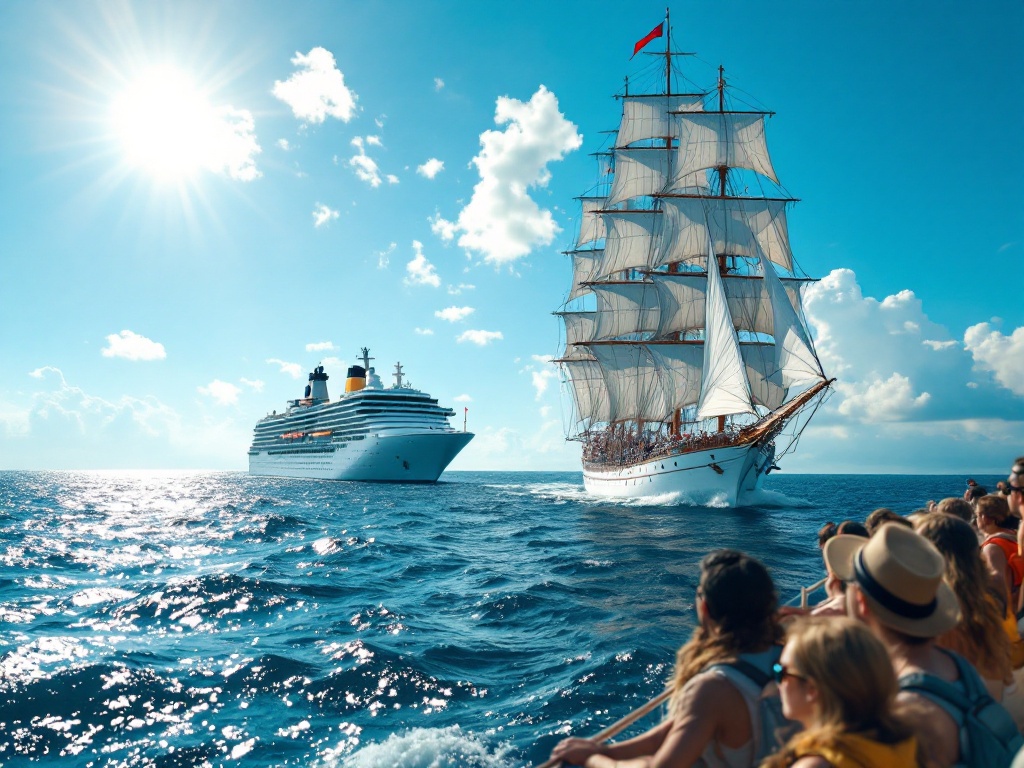How Long Does It Take to Travel across the Atlantic by Boat?
Dreaming of crossing the Atlantic? Discover how long your ocean adventure will take! From swift 6-8 day cruises to adventurous 3-4 week sailing voyages, transatlantic travel times vary greatly. Learn how vessel type, weather, currents, and even the hurricane season can impact your journey. Explore the factors affecting crossing times and find the perfect voyage for you. Dive in now and start planning your unforgettable Atlantic experience!
Important information

- Crossing the Atlantic by boat takes several days to weeks, depending on the vessel.
- Cruise ships are fastest (6-8 days), followed by yachts (9-14 days).
- Cargo ships need 10-20 days, while sailing vessels take 3-4 weeks.
- Weather, winds, and currents significantly affect travel time.
- Hurricane season (June-November) can cause delays or route changes.
Understanding Transatlantic Travel Time by Boat
An Atlantic crossing by boat can take anywhere from a few days to several weeks, depending on the vessel and route. Cruise ships are the quickest, typically making the journey in six to eight days. Yachts offer a more leisurely experience, requiring nine to fourteen days. Cargo ships, focused on freight rather than speed, take ten to twenty days. For a truly adventurous crossing, a sailing vessel will need three to four weeks, subject to the whims of the wind and waves. Weather plays a significant role in any transatlantic voyage, regardless of your chosen mode of transport.
Travel time
- Cruise ships: 6-8 days.
- Yachts: 9-14 days.
Travel time
- Cargo ships: 10-20 days.
- Sailing vessels: 3-4 weeks.
Weather is a key factor affecting travel time.
Factors Influencing Transatlantic Crossing Times
Several factors influence the duration of a transatlantic voyage. Vessel type, wind, currents, weather, and speed all play a significant role, as do navigational strategies. A sailboat, reliant on wind power, might take considerably longer than a motor yacht. While favorable tailwinds can expedite the journey, strong headwinds can significantly impede progress. Ocean currents similarly present both advantages and obstacles. Severe weather, such as storms, can lead to delays or necessitate route alterations, ultimately impacting the overall crossing time. The vessel’s speed is crucial. Faster ships naturally traverse the Atlantic more quickly, though they remain susceptible to weather and current conditions.
Factors Affecting Transatlantic Voyage Duration
- Vessel type: Sailboats, dependent on wind, often have longer journeys compared to motor yachts.
- Wind: Favorable tailwinds can shorten the trip, while headwinds can cause significant delays.
- Ocean currents: Currents can either aid or hinder a vessel’s progress.
Other Influencing Factors
- Weather: Storms and severe weather can cause delays and route changes, impacting the overall crossing time.
- Vessel speed: Faster ships generally cross the Atlantic quicker, but remain influenced by weather and currents.
- Navigational strategies: Effective navigation can optimize the route and minimize travel time.
Impact of Prevailing Winds and Sea Currents
Westbound transatlantic voyages often utilize trade winds for a quicker crossing. Eastbound trips benefit from the Gulf Stream. Favorable winds and currents reduce travel time, while opposing forces can lengthen the journey considerably.
Influence of Weather Patterns and Hurricane Season
The Atlantic hurricane season, spanning from June 1st to November 30th, can significantly impact travel plans. To ensure safety, ships may alter their routes or postpone crossings. Inclement weather, such as strong winds and high waves, poses a challenge, potentially extending journey times.
The Role of Sailing Speed and Average Speed
Transatlantic voyages vary considerably depending on a ship’s speed. Faster vessels naturally make the crossing quicker, but average speeds differ significantly.
Sailing yachts are comparatively slow, averaging between 5 and 10 knots.
Motor yachts can achieve speeds of 15 to 25 knots.
Cargo ships maintain a consistent 15 knots.
Beyond speed, other elements can also impact journey duration.
Typical Crossing Times for Different Vessels
Cruise ship: six to eight days.
Yacht: nine to fourteen days.
Cargo ship: ten to twenty days.
Sailing vessel: three to four weeks.
Cruise Ships: Six to Eight Days
Modern cruise ships utilize advanced technology to cross the Atlantic in approximately a week. Their substantial size also facilitates these quicker transatlantic voyages.
Yachts: Nine to Fourteen Days
An Atlantic crossing by yacht typically takes one to two weeks, depending on several factors. A yacht’s size and speed, along with the chosen route and prevailing weather conditions, significantly influence the journey’s duration. Smaller vessels might require two to four weeks for the passage. Larger, purpose-built yachts can complete the trip in ten to fourteen days thanks to their superior design and capabilities. Imagine a small sailboat as a bicycle and a large yacht as a powerful car—the difference in crossing times becomes readily apparent.
Cargo Ships: Ten to Twenty Days
Cargo ships typically cross the Atlantic in ten to twenty days, depending on several factors. Vessel size and engine power significantly influence the journey’s duration. The route also plays a role, as does the weight and size of the cargo.
Factors influencing transit time:
- vessel size,
- engine power,
- route,
- cargo weight and size.
Typical transit time: 10-20 days.
Sailing Vessels: Three to Four Weeks
A transatlantic sailing voyage typically takes three to four weeks, considerably longer than a trip by motor vessel. This extended duration is due to the reliance on wind power and ocean currents. However, this wind-driven journey is often considered a more rewarding experience.














